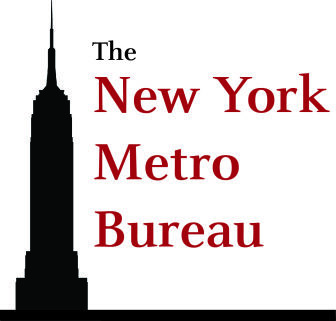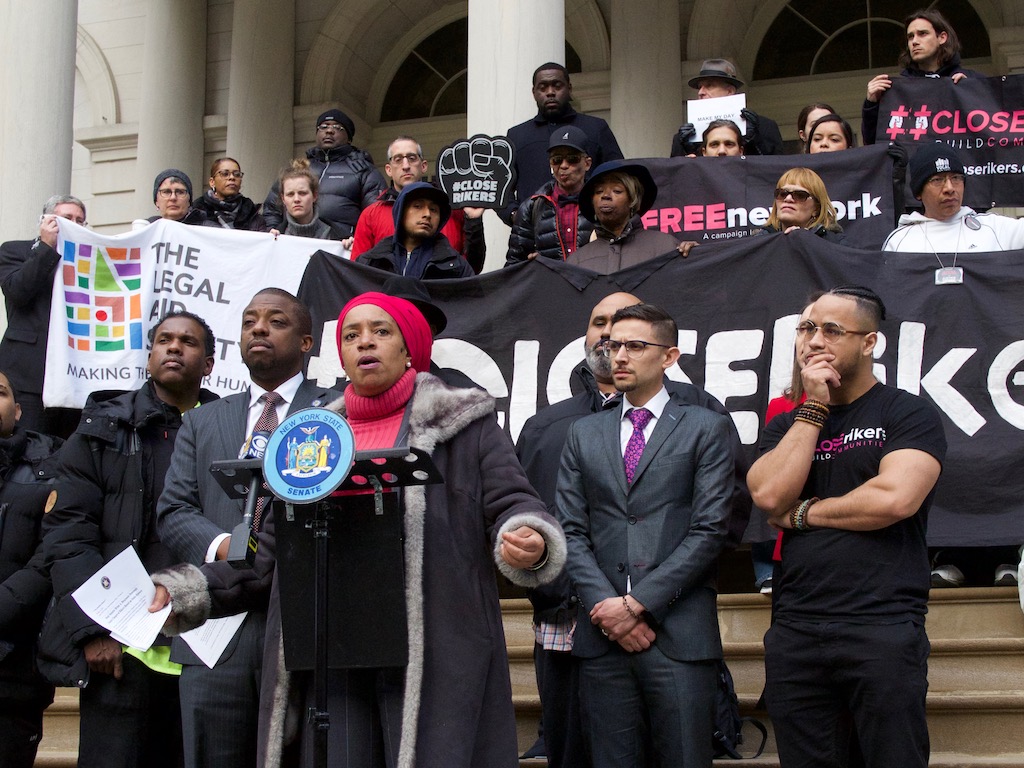NEW YORK — In the first week that 16-year-old Vidal Guzman spent at Rikers Island, three of his fellow detainees hung themselves. All of them were teenagers.
“Every single day felt like hell,” said Guzman, who now works as a community organizer for Just Leadership USA, of his time at Rikers. The remote jail complex, which is plagued by violence, currently holds 120 of these adolescents.
Guzman and other advocates and activists who have been pushing to close the sprawling jail complex that they derisively call Torture Island, had news last week that has brought them closer than ever to their goal. The possibility of finally shuttering Rikers Island has them wanting to make substantive policy changes for incarcerated youth.
“It’s not enough to close Rikers,” said Iesha Sekou, CEO of nonprofit Street Corner Resources, which works with young people. “We have to make sure young people have a real chance at rehabilitation.” Incarcerated youth need viable reentry plans, she and other criminal justice reform advocates say. Limited access to health care, mental health care, education and opportunities to build employable skills are further barriers to reentry, she said.
 Instead of being prepared to rejoin society, she said, “young people learn how to be better prisoners.”
Instead of being prepared to rejoin society, she said, “young people learn how to be better prisoners.”
At Rikers Island, adolescents are exposed to rape, brutality, gang violence and solitary confinement. The culture of violence is so pernicious, Sekou said, that learning how to participate in it is a matter of survival. Young people are 36 times more likely to commit suicide at an adult facility than a juvenile facility.
Last Wednesday Mayor Bill de Blasio and city officials pinpointed locations for four community jails that would replace Rikers Island, one in each borough except for Staten Island. Advocates are hopeful that the news could accelerate the closing of the jail complex from 10 years to three.
In a report detailing its plan to close Rikers, the city says it is committed to providing “age-appropriate facilities” for adolescents “that prioritize education, vocational programming, provide therapeutic services, and have space for outdoor recreation.”
Replacing Rikers Island with the four new facilities is contingent on the city successfully reducing the number of incarcerated people overall. An overwhelming number of Rikers detainees, 85 percent, have not been convicted of crimes. They are stuck waiting for court dates, either because they were ordered to prison until their trial or hearing or could not afford to pay bail.
Following de Blasio’s announcement, Democratic state Sen. Brian Benjamin called for reforms that would reduce wait times at Rikers, such as automatic discovery, abolishing cash bail and speedier trials.
“The city needs to think about this as a state of emergency,” he said.
Dylan Hayre, senior policy analyst at Just Leadership USA, said district attorneys could end cash bail tomorrow if they wanted to, but don’t because it allows them to control the flow of work in courtrooms. His organization works to reduce the number of people incarcerated.
It costs more than $700 a day to support each detainee on Rikers. Advocates like Sekou and Guzman say that at this cost juveniles should be receiving more resources and opportunities for rehabilitation.
“You can get a Harvard education for that amount of money,” Sekou said. “As taxpayers, we should be outraged. For $700 I want to see young people returning to their communities better than they’re returning.”
This story has been updated.

Pingback: Looking at Life After Rikers – New York City News Service